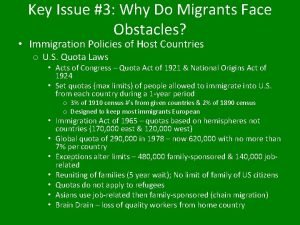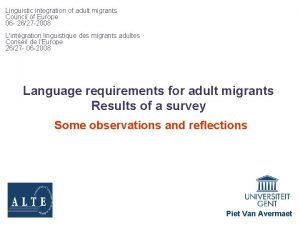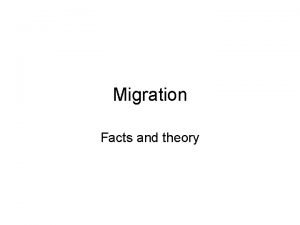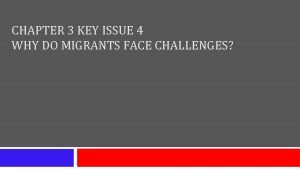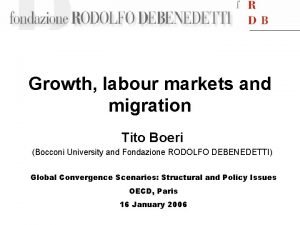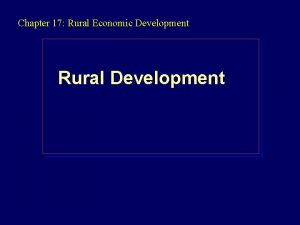Migrants in China Who are migrants Rural people







- Slides: 7

Migrants in China

Who are ‘migrants’? Rural people who move to the city to look for better opportunities They work as factory workers, restaurant staff, cleaners or domestic employees Sometimes they bring their children with them to the cities What is the ‘Hukou’ system? China’s household registration system is hereditary and records people as living where their families are originally from. Migrants cannot access the same welfare services (housing, education, healthcare) as the local population 2

‘Left-behind’ children Children of migrants left in the countryside while their parents move to urban areas for work Taken care of by grandparents, other family members or by their school Attend local rural schools or are sent to rural boarding schools 3

Children & Migration Left-behind Children: 61 million children 10 million children (both parents) � 33 million children in rural boarding schools (private or public schools) Migrant Children: 30 million migrant children in China’s cities (number increasing every year) 500, 000 migrant children in Shanghai Limited access to education (Hukou 4 system)

Major Issues for Chinese migrants • Family separation • Lack of stability • Work conditions • Youth unemployment • Social exclusion • Lower access to social welfare benefits o Cost of healthcare o Access to education 5

Education for migrant children in Shanghai Prior to 2008 Since 2010 Around 400, 000 migrant children 250 illegal grassroot migrant schools 9 years free basic education (in theory) guaranteed by the Chinese government for all children (high school not included) Primary School 2012 Number Around 390, 000 students 69% of migrant children in public schools s In around 20 public schools for migrants) • • Beijing & Shenzhen only 30% 31% in 145 registered migrant schools Receive less funding than public schools • School facilities greatly improved • Classes are often overcrowded • Middle School Around 140, 000 students 100% public schools 6

Public Schools vs Migrant Schools Children’s Test Scores Local Children in Public Schools Migrant Children in Migrant Schools Chinese (Grade 4) 69. 1% 66. 4% 55. 8% Mathematics (Grade 4) 65. 3% 62. 3% 46. 3% Chen Y. & Feng S. (2012 ) Access to Public Schools and the Education of Migrant Children in China, IZA DP No. 6853, 32 p. 7


